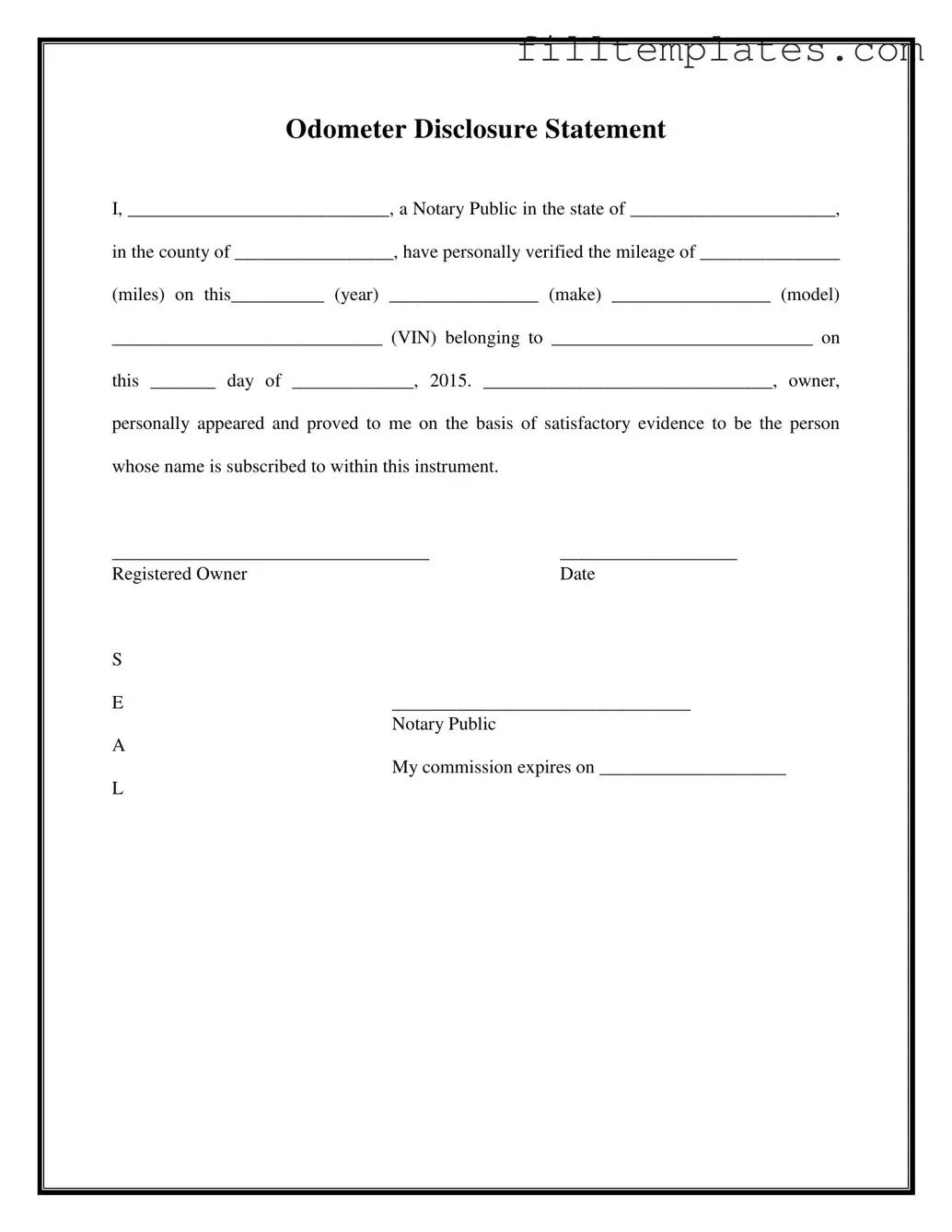Download Notarized Odometer Statement Template
The Notarized Odometer Statement is a crucial document that certifies the mileage of a vehicle at the time of sale. This form, completed by a Notary Public, ensures that the odometer reading is accurate and helps prevent fraud during vehicle transactions. Understanding its importance can facilitate smoother sales and protect both buyers and sellers.
Open Notarized Odometer Statement Editor

